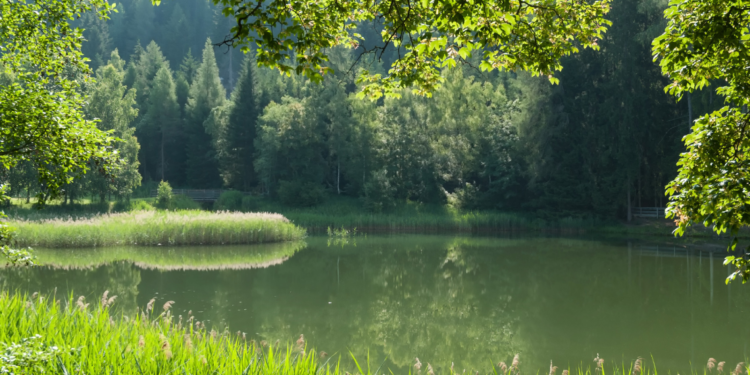Introduction
Pond ecosystems can be found all over the world. They vary in size and depth, but all ponds have one thing in common: they are teeming with life!
Ponds are home to a variety of plant and animal life, including algae, mosses, water lilies, dragonflies, frogs, and fish. These organisms interact with one another to form a complex food web.
Pond ecosystems are important for their role in the water cycle, as well as for the many ecological services they provide. They are also great places to observe nature and learn about the amazing creatures that call ponds home.
Keep reading to learn more about pond ecosystems, including their types, food chains, plants, and animals!
Significance of Pond Ecosystem
Ponds are small, shallow bodies of water that support a wide variety of plant and animal life. Though they may seem insignificant, pond ecosystems play an important role in the health of our planet.
Ponds are home to many different species of plants and animals, which help to keep the water clean and oxygenated. The plants and animals in ponds also provide food and shelter for other wildlife. In this way, ponds serve as an important link in the food chain.
Ponds are also important for the absorption of carbon dioxide and other greenhouse gases. The plants in ponds use these gases to create oxygen, which helps to combat climate change.
Lastly, ponds are simply beautiful places to enjoy nature. They offer a peaceful oasis for us to relax and reflect on the world around us.
Though they may be small, ponds are an
What is Pond Ecosystem
A pond ecosystem is a system of living organisms that interact with each other and with their environment. Pond is a small body of water, usually shallow, that is surrounded by land. A pond ecosystem can be as simple as a puddle or as large and complex as a lake.
It is a small body of water, usually freshwater, that is surrounded by land. ponds are shallower than lakes and have a smaller surface area. The depth of a pond also varies from place to place, and from one season to another season. They are found all over the world, on every continent. They are found in plains, deserts, mountains, and forests. There are many different types of ponds, each with its own ecosystem.
Ponds are important for the environment because they are home to many different plants and animals. They are also a source of food and water for people, and they help to regulate the water cycle.
This article will discuss the different types of pond ecosystems, the food chain, the animals and plants that are found in ponds, and the importance of ponds for the environment.
Pond Ecosystem Food Chain
A pond ecosystem is a complex web of interactions between plants, animals, and microorganisms. In a healthy pond ecosystem, these interactions result in a balanced system that is able to support a wide variety of species.
One of the most important aspects of a pond ecosystem is the food chain. The food chain begins with microscopic plants called algae. These algae are eaten by small animals called zooplankton. The zooplankton, in turn, are eaten by larger animals, such as fish. The fish are then eaten by predators, such as birds or mammals.
Each link in the food chain is crucial to the health of the pond ecosystem. If one link is removed, the entire system can be thrown off balance. For example, if there are no algae, the zooplankton will have nothing to eat and will die
Pond Ecosystem Animals
There are a variety of animals that can be found in a pond ecosystem. Some of the most common include fish, amphibians, and invertebrates. Each of these animals plays an important role in the ecosystem and helps to keep the water clean and healthy.
One of the most important animals in a pond ecosystem is the fish. Fish help to keep the water clean by eating algae and other small organisms. They also provide food for other animals in the ecosystem.
Amphibians are another important type of animal in a pond ecosystem. They help to control the population of insects by eating them. Amphibians also help to keep the water clean by eating algae.
Invertebrates are another important part of a pond ecosystem. They help to break down dead plants and animals, which helps to keep the water clean.
Pond Ecosystem Plants
Pond ecosystems are home to a variety of plant life. While the exact types of plants will vary depending on the climate and location, there are some common plants that are typically found in ponds.
One of the most common pond plants is called Elodea. Elodea is a type of aquatic plant that is often used in pond filters. Elodea can help to keep pond water clean and clear by absorbing nutrients and providing shelter for smaller organisms.
Another common pond plant is called Sagittaria. Sagittaria is a type of aquatic plant that is known for its long, sword-like leaves. Sagittaria can help to oxygenate pond water and provide food and shelter for fish and other aquatic creatures.
If you are planning on adding plants to your pond ecosystem, be sure to research the specific needs of each plant. They also compete with algae for nutrients and help to shade the pond, which can prevent algae blooms.
Choosing the right plants for your pond will depend on the size and depth of your pond, the climate you live in, and your personal preferences. Some common pond plants include water lilies, lotus flowers, cattails, rushes, and sedges.
No matter what type of pond plants you choose, they will all play an important role in keeping your
Conclusion
A pond ecosystem is a system of living organisms that interact with one another and with their physical environment. Ponds are home to a variety of aquatic plants and animals, which depend on each other for food and shelter. Ponds are an important part of the global ecosystem and play a vital role in the food chain.











